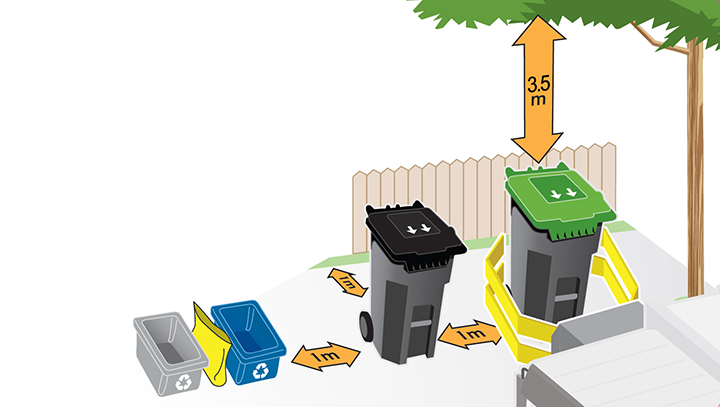
Waste management is one of the most crucial aspects of maintaining a clean and sustainable environment. As individuals, managing waste at home is our responsibility, and with the growing problem of overflowing landfills and environmental pollution, it has never been more important to learn how to handle waste effectively. But how can we manage waste at home in a way that is efficient, eco-friendly, and easy to follow? In this essay, we will explore the various strategies and tips for effective waste management at home.
1. Segregation of Waste: A Key First Step
The first and most important step in managing waste at home is segregation. Sorting waste into categories makes it easier to dispose of materials in the right way.
Common categories for waste segregation include:
- Wet Waste (Organic Waste): This includes food scraps, fruit peels, vegetable waste, and garden waste. Wet waste is biodegradable and can be composted to enrich soil.
- Dry Waste (Recyclables): This includes items like paper, plastic, glass, metal, and textiles. Dry waste can be recycled, reducing the need for raw materials and minimizing pollution.
- Non-Recyclable Waste: Some items, such as broken plastic, old diapers, and certain packaging, cannot be recycled. These items need to be disposed of responsibly.
By segregating your waste into these categories, you make it easier for waste collection services to handle and dispose of the materials properly, and you contribute to reducing landfill waste.
2. Composting Organic Waste
Organic waste, also known as wet waste, can be composted to create nutrient-rich soil for gardens. Composting is a natural process that breaks down organic materials such as food scraps and yard waste. Instead of letting food scraps and other organic waste fill up landfills, composting helps turn them into valuable resources. Even if you don’t have a garden, composting reduces the amount of waste that ends up in landfills, lowering your overall environmental footprint.
To compost effectively at home, you need a compost bin or heap where organic waste is placed. Ensure that the compost is regularly turned and kept moist to speed up the breakdown process. You can compost materials like vegetable peels, tea leaves, coffee grounds, and yard clippings.
3. Recycling Dry Waste
Recycling is a powerful way to manage waste at home and conserve natural resources. Materials like paper, glass, plastic, and metal can be recycled, which means they can be reprocessed and turned into new products instead of being sent to landfills. To recycle properly, ensure that recyclable materials are clean and free from contaminants, such as food residue or grease.
Create separate bins for recyclables and non-recyclables at home. Educate family members about what can be recycled and ensure everyone follows the recycling rules. Once your recyclables are sorted, either drop them off at a recycling center or book a waste collection service, like Wastix, which makes sure your recyclables are sent to the right recycling facilities.
4. Reducing Waste
An essential part of waste management is reducing the amount of waste we generate. By being mindful of what we buy and consume, we can prevent waste at its source.
Some effective strategies for reducing waste at home include:
- Buy in Bulk: Purchase items in bulk to reduce packaging waste.
- Use Reusable Items: Choose reusable containers, cloth bags, and bottles instead of disposable ones.
- Avoid Single-Use Plastics: Minimize the use of single-use plastic products like straws, cups, and plastic wraps.
Reducing waste not only helps in managing garbage at home, but it also promotes sustainability and conserves resources.
5. Responsible Disposal of Non-Recyclables
Not all waste can be recycled or composted. Some items, such as broken electronic devices, batteries, or certain plastics, need to be disposed of in specialized ways. It is important to follow local waste disposal guidelines and ensure that these non-recyclable items are safely disposed of at certified disposal sites or through specific take-back programs offered by manufacturers.
For example, old electronics can be sent to e-waste collection points where they are dismantled and recycled. Hazardous materials like batteries or paints may require special handling to prevent environmental contamination.
6. Using Waste Management Services
Sometimes, managing waste at home can feel like a never-ending task. This is where waste management services like Wastix can play an important role. Wastix provides convenient door-to-door waste collection, ensuring that your waste is picked up from your home and disposed of responsibly. Whether you have wet waste, recyclables, or non-recyclables, waste management services help take the burden off your shoulders and ensure that your waste is processed in an environmentally responsible manner.
7. Educating Family Members and Community
Effective waste management at home requires everyone’s participation. Educating family members about proper waste segregation, recycling, and composting ensures that the system works efficiently. It is also helpful to spread awareness in your community about the importance of waste management. Encourage your neighbors to reduce waste, segregate materials, and dispose of waste responsibly.
Conclusion
Managing waste at home is essential for maintaining a clean environment and promoting sustainability. Through segregation, composting, recycling, and reducing waste, we can make a significant impact on waste management at home. Additionally, using services like Wastix for hassle-free waste collection ensures that your waste is disposed of responsibly. By taking small but meaningful steps, we can all contribute to creating a cleaner, greener world.
